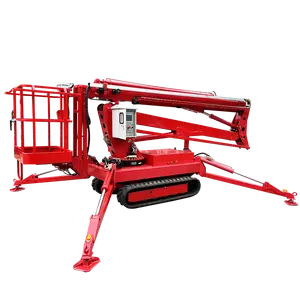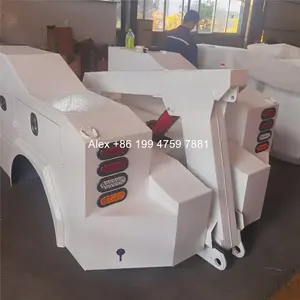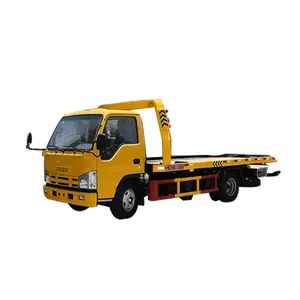





エアストリームモバイルバーフードトラックコンセッションフードケータリングバーベキュービールトレーラーピザフードトラック、キッチン付きレストラン
IDR 81,134,886 - IDR 168,448,379
最小注文: 1 セット







GMCシエラ1500デン4WD格安中古/新品GMCシエラユーコンデン150025003500オフロード牽引パッケージガソリンピックアップトラック
IDR 702,410,228 - IDR 934,921,020
最小注文: 1 単位












万里の長城トラック中古ピックアップトラックShanhaipao 20232.4T Diesel Extreme Edition
IDR 520,303,872 - IDR 686,297,067
最小注文: 1 単位






HOWOヘビーデューティーフラットベッドスライディングローテータレッカー車牽引レッカー車搭載30トンクレーンプラットフォームレッカー車6X4
IDR 235,762,692 - IDR 243,892,440
最小注文: 1 単位






GWMPoerクロスカントリーピックアップトラック、中国万里の長城ダイヤモンドキャノン4WD、手動ギアボックス付き4輪5席
IDR 160,156,036 - IDR 347,953,215
最小注文: 2 セット






アドベンチャーエディションピックアップトラックGWM万里の長城ポーアエクストリームジャーニートウモジュール2023中国3.0T5シートAWD
IDR 595,097,554 - IDR 607,698,663
最小注文: 1 単位






4x 2110HPガソリンエンジンユーロ5標準4トンウィンチTリフト牽引レッカー東風ミニTタイプアンダーリフト牽引トラック
IDR 284,541,180 - IDR 300,800,676
最小注文: 1 セット






万里の長城ピックアップトラック車小型ピックアップトラック4輪4x4シリンダーディーゼルピックアップトラックガン2.0Tガソリン自動FWD
IDR 415,690,275 - IDR 686,297,067
最小注文: 1 単位






GWMPoerクロスカントリーピックアップトラック、中国万里の長城ダイヤモンドキャノン4WD、手動ギアボックス付き4輪5席
IDR 160,156,036 - IDR 347,953,215
最小注文: 2 セット












アドベンチャーエディションピックアップトラックGWM万里の長城Poer Extreme Ambition Tow Module 2023 China 3.0T5シートAWD
IDR 699,158,328 - IDR 711,954,552
最小注文: 1 単位






Keeyak Pure electric Road 4*2牽引レッカートラック170hp、信頼性が高く頑丈な車両付き都市救助に使用され、販売のために掃除されます
IDR 256,900,037
最小注文: 1 ピース






万里の長城ピックアップトラック車ガンバージョン2.0Tガソリン自動fwd貨物三輪車キャノピーキャンピングカー4輪ピックアップトラック用
IDR 415,690,275 - IDR 686,297,067
最小注文: 1 単位






GWMPoerクロスカントリーピックアップトラック、中国万里の長城ダイヤモンドキャノン4WD、手動ギアボックス付き4輪5席
IDR 160,156,036 - IDR 347,953,215
最小注文: 2 セット






アドベンチャーエディションピックアップトラックGWM万里の長城PoerExtreme Enjoy Tow Module 2023 China 3.0T5シートAWD
IDR 666,639,336 - IDR 685,288,978
最小注文: 1 単位












万里の長城ピックアップトラック車ガンバージョン2.0Tガソリン自動FWDパオキャンピングカーシェル小型4輪ピックアップトラック
IDR 415,690,275 - IDR 686,297,067
最小注文: 1 単位






GWMPoerクロスカントリーピックアップトラック、中国万里の長城ダイヤモンドキャノン4WD、手動ギアボックス付き4輪5席
IDR 160,156,036 - IDR 347,953,215
最小注文: 2 セット






ホット販売ミニ電気クロスカントリートラックマウントオールテレーンマンリフトブームトラッククローラー関節式ブームリフト
IDR 11,381,648 - IDR 14,633,547
最小注文: 1 セット
ガソリン牽引車について
ガソリン牽引車は最近の一般の人々にとって新しいものではなく、もはやタブーとは見なされていません。その最後から2番目の喜びを探しているなら、あなたは計り知れないものをチェックしなければなりません。 ガソリン牽引車コレクション(Alibaba.com)。これらの官能的で曲がりくねった。 ガソリン牽引車は一銭の価値があり、あなたにとって特別な夜になること間違いなしです。これらの人形は、あらゆる意味で髪の毛からつま先までリアルな外観をしています。
あなたがリアルなパートナーを探している孤独な人でも、人生を盛り上げたいカップルでも、これらを使用できます。その火に火をつけるためのガソリン牽引車。これらの壮観。 ガソリン牽引車は、期待に応じてカスタマイズできます。これらは素晴らしい。 ガソリン牽引車は男性用と女性用の両方のバージョンがあり、安全に使用できるように医療用シリコンで作られています。今すぐ入手して、情熱と火の夜をお楽しみください。
Alibaba.comはこれらの素晴らしいサービスを提供しています。 ガソリン牽引車すべての体型、サイズ、民族。の要件が何であれ。 ガソリン牽引車、サイトですべて入手できます。これら。 ガソリン牽引車は最高の職人によって形に成形され、すべての複雑な細部が徹底的に検査されます。これらの人形は、目、髪の毛、爪、その他すべての体の部分を実際の人と同じように持っています。
Alibaba.comは幅広い範囲を提供しています。 ガソリン牽引車は予算やその他の要件に合った製品を購入するのに役立ちます。これらの製品は安全に使用でき、認定されており、本質的に環境に優しい製品です。これらの製品でOEM注文を利用できます。
あなたがリアルなパートナーを探している孤独な人でも、人生を盛り上げたいカップルでも、これらを使用できます。その火に火をつけるためのガソリン牽引車。これらの壮観。 ガソリン牽引車は、期待に応じてカスタマイズできます。これらは素晴らしい。 ガソリン牽引車は男性用と女性用の両方のバージョンがあり、安全に使用できるように医療用シリコンで作られています。今すぐ入手して、情熱と火の夜をお楽しみください。
Alibaba.comはこれらの素晴らしいサービスを提供しています。 ガソリン牽引車すべての体型、サイズ、民族。の要件が何であれ。 ガソリン牽引車、サイトですべて入手できます。これら。 ガソリン牽引車は最高の職人によって形に成形され、すべての複雑な細部が徹底的に検査されます。これらの人形は、目、髪の毛、爪、その他すべての体の部分を実際の人と同じように持っています。
Alibaba.comは幅広い範囲を提供しています。 ガソリン牽引車は予算やその他の要件に合った製品を購入するのに役立ちます。これらの製品は安全に使用でき、認定されており、本質的に環境に優しい製品です。これらの製品でOEM注文を利用できます。





























































































































